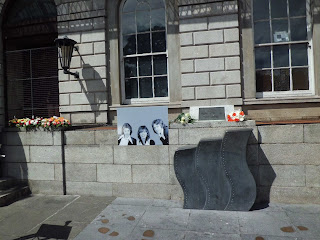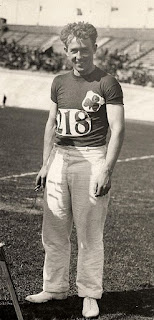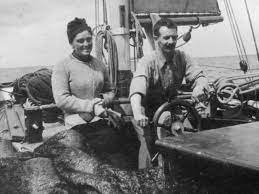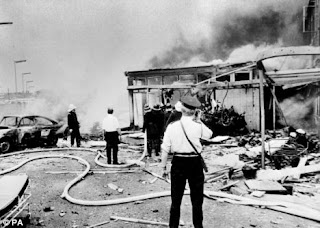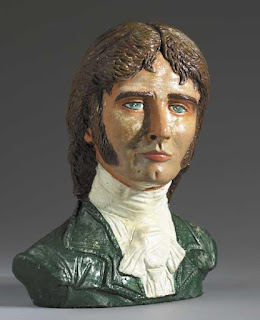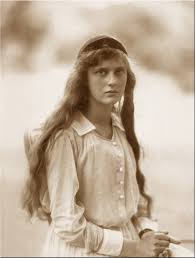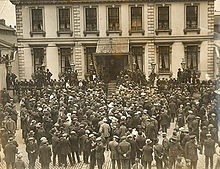12 July [O.S. 1 July] 1690: The Battle of the Boyne/Cath na
Bóinne was fought on this day. The mainly Protestant Army of King William of
Orange defeated the mainly Catholic Army of King James II. With around 36,000
Williamites against 25,000 Jacobites this battle, in terms of the numbers of
men on the battlefield was the largest clash of arms ever fought in Ireland.
Both kings commanded their armies in person assisted by a
number of men of high rank and status. King William had under his orders
English, Scottish, Dutch, Danish, French Huguenots and Protestants from
Ireland. King James Army mainly consisted of Catholic Irishmen, and a
scattering of Englishmen loyal to the Stuarts. The King was also backed by
around 6,500 regular French troops sent by King Louis XIV. William sent 10,000
men towards Slane with the advance guard under Count Meinhard, which drew the
bulk of the Jacobites upstream in response. With some 1,300 Jacobites posted in
downstream in Drogheda, only 6,000 were left at Oldbridge to confront 26,000
Williamites. Duke Frederick Marshal Schomberg (William’s top General) then led
the Dutch Blue Guards and other regiments into the waters of the Boyne and
across to the other side.
Opposing them were just seven regiments of the Catholics who
shot their attackers down in great numbers as they attempted the passage of the
Boyne at Oldbridge. A want of sufficient cavalry and artillery to block the
crossing of so formidable a host eventually told against the Irishmen. They
were pushed back from the riverbank as their enemies gained a toehold and then
flowed across. William himself eventually crossed at Drybridge slightly
downstream with about 3,500 mounted troops.
Marshal Schomberg brought down to the ford of Ouldbridge the
gross of his cavalry, with orders to push on and suffer no check. At this, the
seven regiments aforesaid of Irish foot, observing they would be soon
overpowered, they cried to their own for horse to sustain them. In the
meanwhile, they made a smart fire at the enemies, and laid them in heaps, as
they were entering the waters. But their crying for horse was in vain; for they
received but one troop, which was as good as nothing.
By the time reinforcements arrived it was too late and the
enemy was across in strength. The seven regiments of Irish foot, which guarded
the great ford of Ouldbridge, not being supported by horse, were also forced to
retreat, but were in danger to be intercepted by such of the enemy as had
traversed first the river before they joined their main army, which the duke of
Tyrconnell, from the right, perceiving, flew with his regiment of horse to
their rescue, as did the duke of Berwick with the two troops of guards, as did
colonel Parker with his regiment of horse, and colonel Sutherland with his. It
was Tyrconnell's fortune to charge first the blue regiment of foot-guards to
the prince of Orange, and he pierced through.
Further upstream Count Meinhard had by then crossed the
Boyne by the ford at Rosnaree and though blocked by O’Neills cavalry regiment
he was soon reinforced. With King James left flank now turned his position was
a precarious one. Most of his army was at this critical moment of the battle
betwixt and between these two vital points and unable to render assistance to
either in enough strength to turn the days events.
The King himself with a considerable portion of his Irish
and French troops did however block Lord Douglas in the Williamite service from
crossing the Boyne at Donore - which is situated between the fords of Rosnaree
and Oldbridge. But this was a stalemate while the outcome of the battle was
decided to the left and the right of the King’s position at Donore.
Eventually as the Williamites got across the river in
strength on both the left and right flanks the order was given to fall back on
Duleek to the south and stop that village been taken by the enemy. If King
Williams’s men had taken the vital bridge there then the whole of the Jacobite
army would have been cut off from retreat and in all likelihood captured in its
entirety.
As it turned out the retreat was carried out in good order
by the Jacobite Army and despite further clashes Lord Tyrconnel, who was given
command of the rear-guard, it was able to effect an orderly withdrawal. The
enemy were content to follow in their footsteps and not risk a reverse.
However in these follow up operations the Williamites lost
their best military leader – Marshal Schomberg.
Twas during these encounters that one master Bryen O'Tool,
of the guards, discovering his former acquaintance, marshal Schomberg, near the
village of Ouldbridge, resolved to sacrifice his life to the making him away,
upon which he, with a few of the guards, and a few of Tyrconnell's horse, made
up to him, and O'Tool with his pistol shot the marshal dead. But, soon after,
fighting like a lion, he was slain.
King James's army retreated across the river Nanny at Duleek
and evaded capture. It had been a ‘close run thing’ and though the battle had
been lost the Army was intact and still a cohesive fighting force.
Bad tactics rather than bad fighting had cost King James and
his Irish followers the chance of victory against a more numerous enemy. The
line of the Boyne might well have been held but King James had been
outmanoeuvred by Marshal Schomberg’s plan - even though this crusty old
Huguenot did not live to savour the Victory he had so materially helped to
achieve.
Though there was some hot fighting in the course of the
battle overall the casualties were light on both sides with perhaps 1,500
soldiers lying dead or wounded along the banks of the Boyne. Considering the
strategic consequences of this clash of arms it was a very low number for a battle
that determined the political and religious balance of power in Ireland for
centuries to come and this clash of arms on the banks of the river Boyne still
resonates down to our own day.
